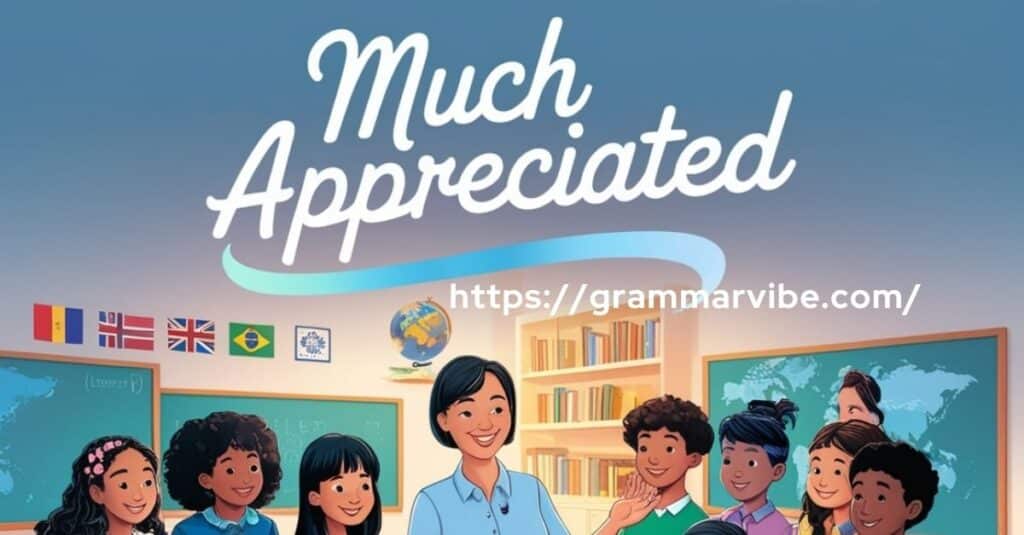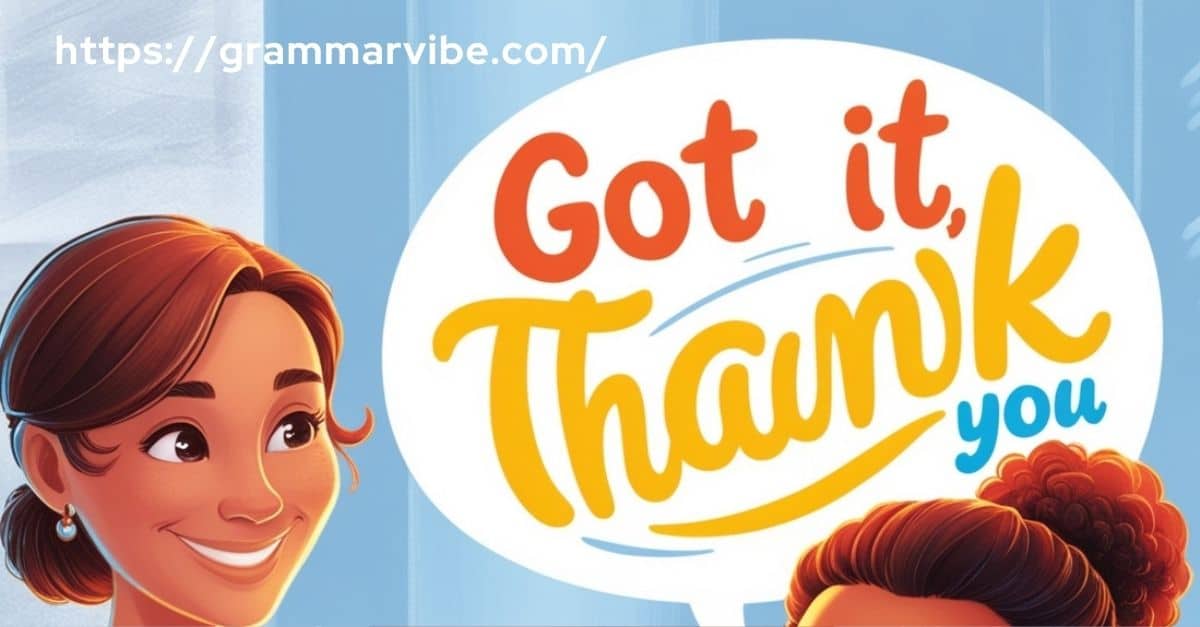In today’s world of email communication, it’s easy to fall into the habit of using the same simple phrases like “Got it, thank you” over and over. While this expression is polite and conveys acknowledgment, it can sometimes sound overly casual or too repetitive. Whether you’re emailing colleagues, clients, or managers, varying your acknowledgment phrases is crucial to maintaining a professional tone and fostering more engaging workplace communication.
Here, we’ll explore 15 other ways to say “Got it, thank you”, each suitable for different contexts with some useful scenario examples, so you know when and how to use them. By choosing the right acknowledgment phrase, you not only enhance your email etiquette, but also contribute to a more positive tone in your business communication.
1. Understood, Thank You
When you need to acknowledge instructions or information clearly and concisely, “Understood, thank you” is a great option. This phrase is especially effective in formal acknowledgment situations, where you want to show you’ve grasped the details without sounding too casual.
Scenario Example:
Subject: New Project Guidelines
Hi Sarah,
Understood, thank you. I’ll make sure to implement the new guidelines as discussed. Let me know if you need any further details from my side.
Best regards,
John
2. Received, Thank You
“Received, thank you” is a succinct, professional email response that confirms you’ve received the message or document. It’s perfect for confirming receipt of information without the need for elaboration.
Scenario Example:
Subject: Meeting Agenda
Hi Jessica,
Received, thank you. I’ll review the agenda and be prepared for tomorrow’s meeting.
Best regards,
David
3. Thanks for the Info
For a more informal or friendly response, “Thanks for the info” works well. It conveys appreciation for helpful details without sounding overly stiff. This is especially useful in team communication or when responding to a casual update.
Scenario Example:
Subject: Updated Work Schedule
Hi Mark,
Thanks for the info! It’s great to know the updated schedule. I’ll adjust my plans accordingly.
Cheers,
Anna
You might also like: 15 Other Ways to Say “The Text States”
4. I Appreciate the Clarification
When a message or instruction requires further clarification, this phrase expresses gratitude and acknowledges that the sender has helped clear up any confusion. This is especially useful in business communication where clarity in communication is important.
Scenario Example:
Subject: Clarification on Marketing Strategy
Hi Rachel,
I appreciate the clarification. It’s much clearer now, and I’ll proceed with the updated strategy.
Thank you,
Michael
5. Noted, Thanks

A brief email response, “Noted, thanks” is perfect when you want to confirm that you’ve received the information and don’t need to add anything further. It’s effective in workplace email etiquette for keeping things concise.
Scenario Example:
Subject: Approval for Project Budget
Hi Linda,
Noted, thanks. I’ll ensure the budget aligns with the parameters provided.
Regards,
Tom
6. I Understand, Thank You
If someone provides a detailed explanation or instruction, this phrase assures them that you’ve understood the information fully. It’s appropriate in professional settings where confirming comprehension is important.
Scenario Example:
Subject: New Sales Process Update
Hi Emma,
I understand, thank you. I’ll make the necessary adjustments and ensure the team is informed.
Best regards,
Rachel
More for you: 15 Other Ways to Say “Sorry to Hear That”
7. Acknowledged, Thank You
“Acknowledged, thank you” is a formal acknowledgment phrase that works well in both business and professional settings. It’s a great choice for confirming that you’ve received and understood a piece of information, whether in written form or verbally.
Scenario Example:
Subject: Revised Report Deadline
Hi James,
Acknowledged, thank you. I’ll ensure the report is submitted by the revised deadline.
Sincerely,
Sophia
8. Thanks for Letting Me Know
This acknowledgment phrase adds a touch of gratitude and is perfect for when someone shares important information with you. It’s both polite and personable, making it ideal for both professional and informal communication.
Scenario Example:
Subject: Office Closed Tomorrow
Hi Karen,
Thanks for letting me know! I’ll reschedule my appointments accordingly.
Best,
Chris
9. I See, Thanks for Explaining
“I see, thanks for explaining” is an excellent response when someone has taken the time to explain something in detail. It conveys that you’ve understood and appreciated their effort.
Scenario Example:
Subject: Project Management Tool Walkthrough
Hi Olivia,
I see, thanks for explaining the new tool. It seems straightforward, and I’ll start using it right away.
Regards,
Marcus
Check out this: 15 Other Ways to Say “Thinking of You”
10. Perfect, Thanks
When everything is in order or exactly as you hoped, saying “Perfect, thanks” shows satisfaction and gratitude in one go. It’s especially helpful in team communication when confirming that something has been done correctly.
Scenario Example:
Subject: Final Approval for Design
Hi Lily,
Perfect, thanks! The design looks great. I’ll go ahead and send it to the client for approval.
Best,
Nina
11. That’s Clear, Thank You
For situations where you need to confirm that you understand something, this phrase is great. It’s especially useful when clarity in communication is critical and helps avoid any confusion later.
Scenario Example:
Subject: New Office Protocol
Hi Ben,
That’s clear, thank you! I’ll make sure to follow the new office protocol starting tomorrow.
Regards,
Olivia
12. Much Appreciated

When you want to sound more personal and grateful, “Much appreciated” is a great option. It’s a bit warmer than simply saying “thank you,” and adds a human touch to your email correspondence.
Scenario Example:
Subject: Assistance with Data Entry
Hi David,
Much appreciated! I’ll get started on entering the data now. Thanks for your support.
Best,
Sophia
13. Thanks for the Update
This is a friendly email response to use when someone provides you with an update or new information. It conveys appreciation while keeping the tone light and conversational.
Scenario Example:
Subject: Project Status Update
Hi Kate,
Thanks for the update! I’ll keep an eye on the progress and let you know if I need anything further.
Best,
Ethan
14. Understood, I’ll Take It from Here
This phrase is a bit more assertive and works when you’re ready to take responsibility for the next steps. It’s particularly useful in situations where someone hands off a task to you.
Scenario Example:
Subject: Marketing Campaign Handoff
Hi Emma,
Understood, I’ll take it from here. I’ll start working on the campaign materials and update you in a few days.
Best,
Jack
For your interest: 15 Other Ways to Say “As You Can See”
15. Thanks for the Heads-Up
“Thanks for the heads-up” is a casual email response that expresses gratitude when someone provides you with early information or a warning about a situation.
Scenario Example:
Subject: Change in Meeting Time
Hi Sarah,
Thanks for the heads-up! I’ll be sure to adjust my schedule accordingly.
Cheers,
Mark
Table of 15 Synonyms for “Got It, Thank You”
| Acknowledgment Phrase | Suitable Context |
|---|---|
| Understood, Thank You | Formal acknowledgment in professional settings |
| Received, Thank You | Confirmation of receipt of information/documents |
| Thanks for the Info | Casual and friendly response to received info |
| Appreciate the Clarification | Expressing gratitude after a clarification |
| Noted, Thanks | Brief, professional acknowledgment |
| I Understand, Thank You | Confirming understanding in professional settings |
| Acknowledged, Thank You | Formal acknowledgment of receipt |
| Thanks for Letting Me Know | Friendly response to information received |
| I See, Thanks for Explaining | Acknowledging understanding after an explanation |
| Perfect, Thanks | Expressing satisfaction with information received |
| That’s Clear, Thank You | Confirming understanding after clarification |
| Much Appreciated | Expressing deeper gratitude |
| Thanks for the Update | Responding to a helpful update |
| Understood, I’ll Take It from Here | Taking responsibility after receiving info |
| Thanks for the Heads-Up | Casual acknowledgment of a warning or early info |
Conclusion
Using varied acknowledgment phrases in your professional emails can help you communicate more effectively and foster a positive workplace culture. Whether you’re sending formal acknowledgments or casual responses, choosing the right email alternative ensures that your business communication remains engaging and professional.
By incorporating these alternatives into your daily email correspondence, you’ll avoid sounding repetitive and create a more polished and considerate impression. And remember, every polite response goes a long way in building rapport, clarifying misunderstandings, and showing appreciation for others’ time and effort.

Kyren Paul is an experienced blogger and the creative mind behind “Grammar Vibe.” With a passion for the nuances of English grammar, he brings clarity and insight to everyday language topics, making grammar accessible and engaging for readers of all levels.











Leave a Comment